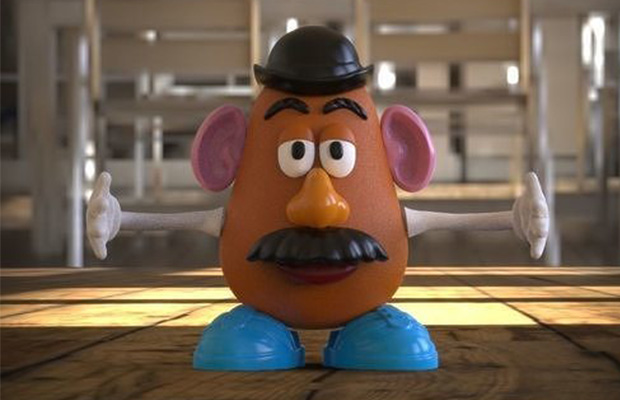Even though the vast majority of us adults have grown up watching toy commercials on TV, everything has to start somewhere. Do you know what was the first toy advertised on TV? The answer is Mr. Potato Head!
You didn’t see toy advertisements on television before 1952 because, unlike today, television didn’t advertise specifically to children. All marketing was targeted at parents, who made the purchasing decisions. This made sense at the time logically. Children lacked money and were unable to independently go to a store and buy something. The decision by Hasbro to cut out the middlemen and advertise directly to children on television in 1952, however, completely altered this situation.
Today we are going to introduce you to the history of Mr. Potato Head and why it is successful, and also explain ads’ negative effects on children. Keep reading!
Read More: Is Advertising A Good Career Path?
Table of Contents
What Was The First Toy Advertised On TV?
What was the first toy to be advertised on television? You might not have guessed it, but Mr. In actuality, the first toy ever to receive TV advertising was Potato Head! In April 1952, Hasbro began producing the toy spud after George Lerner first created it. Commercials featuring the product were then shown to kids in the US.
Since children were being targeted in advertisements for the first time, this marked the beginning of the “pester power” phenomenon, in which kids would pester their parents for toys that were being unintentionally marketed toward them. Hasbro’s innovative campaign was a smashing success, selling more than one million units for less than $1 in the first year.
The producers are Hasbro Inc., which made two key innovations with a Marketing strategy for Mr. Potato Head.
- It was the first children’s toy to ever be advertised on television; although this was a novelty in itself, it is unsurprising that advertising would take advantage of the new televised media form as it came into maturity.
- More significantly, however, Mr. Potato Head was marketed directly at children, meaning the campaign was the first example of using television advertising to directly encourage children to request certain products from their parents.
About Mr. Potato Head
The now-plastic potato was once a real one, though, didn’t you know that! You did indeed read that correctly. Mr.’s initial work of art Parents had to give their kids real potatoes because Potato Head was only equipped with eyes, ears, a nose, and a mouth. You won’t be shocked to learn that complaints about moldy vegetables quickly followed, and Hasbro was compelled to include a plastic body as a result of new government regulations in the early 1960s.

Intreresting Toy Story
In 1995, Mr. Potato Head appeared alongside Woody, Buzz, and the rest of the gang in Toy Story, arguably the greatest children’s film of all time. (Visit this page to view our selection of toys.) A generation of children would be affected by the movie franchise, which would go on to gross more than $3 billion worldwide. He entered the National Toy Hall of Fame five years after making his screen debut.
Was Mr. Potato Head Ad Successful?
We are aware that Mr. Potato Head was the first toy to be advertised on TV, and the commercial specifically encouraged children to ask their parents to buy them a Mr. Nowadays, it’s commonplace to market directly to children, but in 1952, the idea was revolutionary.
The late 1940s saw the invention of Mr. Potato Head, which was not very successful. Part of the reason for the initial lack of success was that the product was just a set of accessories that kids were supposed to pin into a real potato. This led to a lot of moldy potatoes, as you probably know if you’ve ever looked after children. With a successful marketing campaign, Hasbro was able to change this.
The product’s rights were acquired by Hasbro in 1951, and the first television ad was broadcast in 1952.
Hasbro was able to sell one million Mr. Potato Head toys in 1952 thanks to the wildly successful commercial. Despite its political controversy in 2020, Potato Head kits are still a huge hit.
Prior to the release of Mr. Potato Head, Hasbro was a small business that primarily produced doctor and nurse kits and modeling clay. They rank as the third-largest toy manufacturer in the world at the moment.
Worldwide toy and other product sales were revolutionized by the Mr. Potato Head TV commercial. Children repeatedly pleaded with their parents to give them the toy after seeing it on television. In the UK and the United States, this tactic was dubbed “pester power” and the “Nag Factor,” respectively.
Is Direct Marketing To Children Will Be A Problem?
The children were instructed to go ask their parents to buy a Mr. Potato Head by the Mr. Potato Head commercial. Parents are forced to tell their children no and then endure constant nagging as a result of the children seeing these advertisements for potato head kits.
From television commercials to the actual placement of products in stores, this method of advertising is now commonplace. The next time you go grocery shopping, you might notice that many items targeted at children are colorful, have amiable mascot characters, and are displayed in the store at eye level.
Because children lack life experience, there is controversy. Because they frequently lack a basic understanding of money and its effects, they are particularly susceptible to advertising.
The nagging and persistent exposure to advertising strains the bond between parents and children and maybe more detrimental in other ways. As time has gone on, parents have pushed for tighter restrictions on what can and cannot be advertised to children.
Ads’ Negative Effects On Children
Advertising aims to persuade consumers to make purchases or take action; it is rarely considered whether this is best for the target audience. Advertisers take advantage of the ease with which kids are influenced. Advertising, however, can harm children over the long term and even into adulthood.
Encourages More Buying And Demands To Parents
According to studies, parents become more stressed and demand more toys and goods the more TV their children watch. Given that the advertisements children are exposed to are created with this response in mind, this behavior makes sense. Due to the inevitability of advertisements, some researchers have advised parents to turn off the television.
Kids’ brains aren’t fully developed until they are teenagers, so they might not fully comprehend that advertisements don’t always tell the truth. For instance, a commercial might convince a young viewer that getting the new Air Jordans will improve their basketball skills and increase their social circle. Kids might not understand that this is just marketing and that a pair of shoes won’t do anything special for them. However, adults are aware of this.

Cause Bad Habits
Regulated content makes it a little more difficult for children to see advertisements for alcohol, tobacco, and now vape products, but they are still widely distributed and accessible to them. Most of the time, kids are taught that smoking makes you cool, that drinking alcohol makes life more enjoyable and that since all the cool kids are vaping, they should too. These kinds of products are extremely unhealthy for you, so many advertisers have run into trouble when trying to market them to kids.
Consider the vape company JUUL as an example; they purchased advertising space on websites for children and offered appealing flavors in their vaping products that children would enjoy. The US courts have now fined them $40 million because, whether on purpose or not, their advertising encouraged young people to become nicotine addicts.
While obviously unhealthy products like drugs and alcohol are no longer advertised to children, sugar is still widely used. Sugary cereals, candies, and snacks are heavily marketed to children for a reason. Once a child becomes addicted, they are likely to remain a customer for the majority of their life.
Advances Idealistic Beauty Standards
Even though some of the media’s portrayals of how we should look cause us adults problems, children who are still growing and trying to make sense of the world face a greater challenge. Everyone does not look the same in life because children are growing and going through awkward stages.
In most cases, advertisements push particular ideals of male and female beauty. The established standards are frequently challenging to meet and sometimes even impossible. Then you need to think about how much lighting, photoshopping, and other creative enhancements are used for commercials that are simply not realistic.
Exposing children and teenagers to these advertisements is a major contributor to the prevalence of eating disorders and other mental health conditions that can last a person their entire life.
Two Facts That All Parents Should Know
One: As soon as we can, we must impart media literacy skills to our offspring and grandchildren. The first article I cited offers specific advice on how to do this based on your age. Christians have a unique duty: the sooner we can help children think biblically about themselves and their world, the better. Remembering that the Christian faith is always one generation away from extinction, we are to “bring them up in the discipline and instruction of the Lord” (Ephesians 6:4).
Two: Perseverance is almost always necessary for success. Rarely is the “overnight sensation” actually that. Scripture gives us hope: “If we don’t give up, we will reap if we don’t grow weary of doing good (Galatians 6:9).
The two points are connected. For as long as we or they are alive in this world, parents are to assist their children in growing in Christ. Our job becomes more crucial the harder our culture makes it. Giving up on our children or our Lord is never the right decision.
In today’s culture, Mr. Potato Head is commonplace. However, our eternal life will have only just begun 10,000 years after he and every other invention are forgotten.
FAQs
What Was The First Toy Advertised on Australian TV?
Mr. Potato Head was the first toy to be advertised on television and the first advertisement to be aimed at children.
What Is The Oldest Toy In The UK?
The world’s oldest toy store, it was founded by William Hamley as “Noah’s Ark” in London’s High Holborn in 1760. In 1881, it relocated to its present location on Regent Street in London’s West End.
What Was The Hottest Toy In 1970?
NERF Ball. The NERF Ball, created by Parker Brothers in 1970, became an instant hit because it could be used indoors. The extremely light ball was deemed safe for use indoors because it is made of non-expanding recreational foam (NERF). Users couldn’t break lamps, break windows, or hurt infants, according to advertising.
The world’s oldest toy store, it was founded by William Hamley as “Noah’s Ark” in London’s High Holborn in 1760. In 1881, it relocated to its present location on Regent Street in London’s West End.
Take Away
Advertisers have had nearly 70 years to hone their abilities in persuading children to make purchases since the Mr. Potato Head television commercial established the trend of advertising directly to children.
Although there are strict regulations about advertising to children, marketing softly to this valuable audience can still produce considerable pester power.
Read Next: What Does Ads Mean In Gaming?





